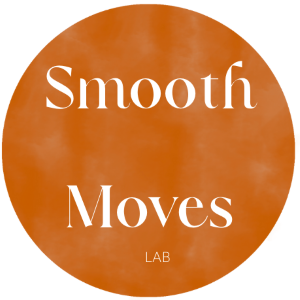Written for Feldenkrais UK to celebrate International Feldenkrais Week 2024
Is Feldenkrais (only) a movement method?
I originally came to Feldenkrais, thinking of it primarily as a movement class as it was taught to me by an ex-Pilates teacher.
In movement classes, I was always on edge, restless, insecure about whether I was doing a good enough job. Was the teacher pleased with me?! I now know I was treating my body as an object to be fixed to match up to somebody else’s ideal. I was acting as if my mind was the commander of my body. I was not fully experiencing the present moment but directed towards a future goal.
A mind-with-body movement method
My first Feldenkrais class was surprisingly different. I was instantly attracted by the way the teacher gave students autonomy to feel and decide for ourselves exactly how to do each of the movements. To follow along. And to please ourselves. Straight away, the marriage of mind-with-body was evident to me. I felt a kind of expanded timelessness. Ease. It was very unusual, but it felt good!
Clues from clients about what they value
Fast forward a decade or more and now I teach Feldenkrais ‘Awareness Through Movement’ classes. Often, like I was back then, students come expecting one thing – physical help – but are delighted to discover something extra, more holistic. They come looking to lessen pain, reduce stiffness, re-learn how to move well after surgery.
Excitedly though, after even their first class, they tell me how they have more self-confidence, a soothed nervous system and anxiety is fading away. Movement teachers – yoga, Pilates, somatics, dance – come for an added internal dimension to their own practice. Meditation and breathwork teachers enjoy sampling Feldenkrais and spotting the similarities to their own practices. Students of mindfulness are surprised that these lessons give a way to practise ‘mindfulness in motion’ which may be easier for them to do than other mindfulness approaches.
How does an Awareness Through Movement lesson work its magic?
We take a few moments to ‘bring you into the room’. We may acknowledge your ongoing day and the outside environment. Then, we start to let these ideas of earlier and elsewhere go.
As teacher, I do not give you a goal for the lesson. Your thoughts are not drawn to leapfrog over ‘now’ in order to focus on a future moment that will take place in 30 minutes or an hour’s time at the end of class.
Instead, I may guide your attention onto the present moment, to your sensations, perceptions. As Moshe Feldenkrais describes in the quote alongside, the teaching style is not instructional. I use rhetorical questions, stories, invitations and metaphors. I may home in on your external sensations – how you detect what is going on in the immediate environment. Called exteroception, these senses include vision, sound and smell.
As I start to guide you through each lesson’s movement explorations, I may move your attention closer to your surface and interior, to your more inward senses of interoception including touch, pressure, temperature, proprioception (knowing where you are in space) and kinaesthesia (feeling how you move through space). A recent article describes interoception as a hidden sense shaping your wellbeing.
A lesson is likely to include phases of gentle movements, interspersed with moments of rest where we have chance to observe any changes we feel. I guide students to combine movement with attention, to experience relaxed action, which is the hallmark of flow and mastery as described by Mihaly Csikszentmihalyi in his book Finding Flow.
As the minutes go by, students may discover they can let go some of their accustomed patterns of tension, to acquire more softness, smoothness in motion, finesse. By the end of class, we may feel we rest differently on the floor, more at ease somehow. Quieter in our body, quieter in our mind.

